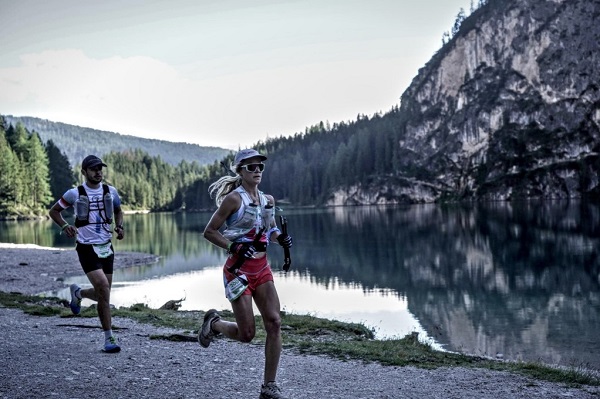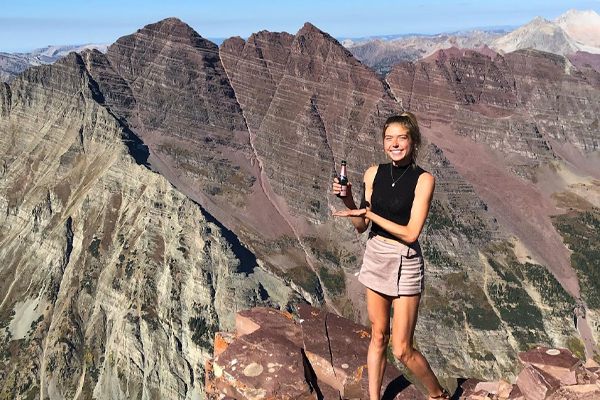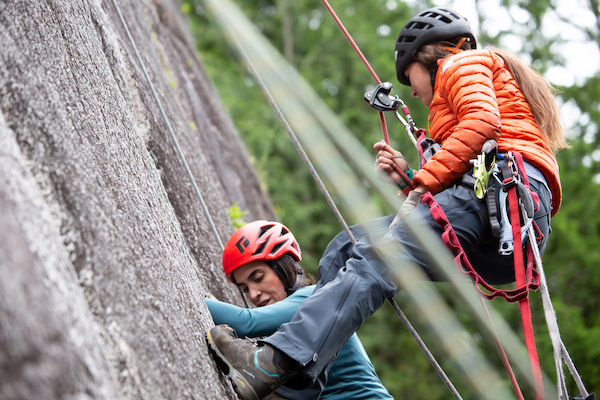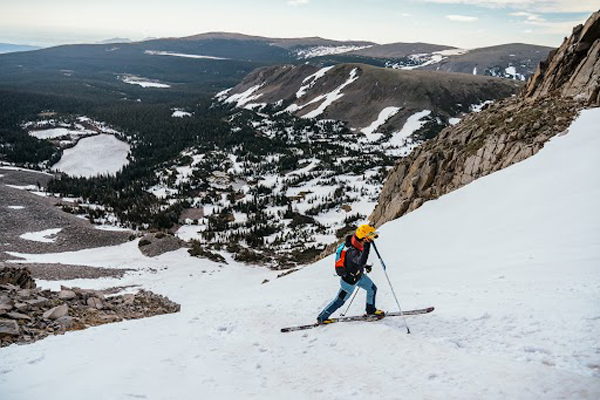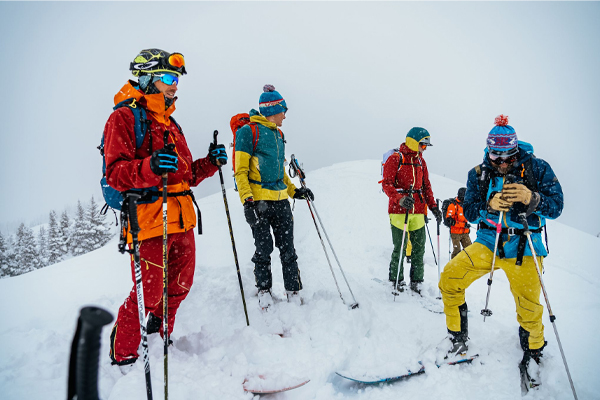Leadville 100 Part Two - Anton Krupicka

La Sportiva athlete Anton Krupicka shares his thoughts on his most recent Leadville Trail 100 race experience...
- - -
Twin Lakes to Winfield (38-50mi)
I trailed Ian closely across the river and through the meadow to the base of the 3500’ climb up Hope Pass, fully expecting to re-pass him with ease. I think of the Hope double-crossing as being my type of terrain–steep hiking, thin air–and have always gained time through here in races past. Not so today. Within a few minutes, I could tell that not only was I not gaining on Ian, but that he might even be gapping me ever-so-slightly. Soon, my mind went negative and I hit the darkest mental thicket of the entire race. My legs hurt. I seemed to be getting dropped. My achilles was starting to burn.
Every single time I’ve raced 100 miles, I’ve thought about quitting at least once. This was that moment for me. I very briefly entertained the thought of the complicated logistics of dropping at Winfield–surely my achilles would prove to be a worthy excuse by that point–but quickly pushed those notions out of my mind and instead re-committed to finishing. Ooof, a 60-mile walk back to Leadville sounded miserable. Well, at least I’d have some podcasts if I wanted. I lamented not picking up some trekking poles from my crew at Twin Lakes. Paradoxically, all of this negative thinking distracted me enough to ease slightly off the pace and chill out, relax into the effort, and remember to just do what I could at the moment. No projecting into the future. My achilles was fine. Sure, my legs hurt, but I’d already run more than 40 miles, what did I expect?
Of course, soon enough, things started turning around. Ian wasn’t disappearing completely up the hill, and he and I were actually catching another runner in front of us. Before I knew it, we were marching into the Hopeless Aid station, one of my favorite spots in North American ultrarunning. The setting a few hundred feet below the pass is idyllic, with wildflowers, llamas grazing, and enthusiastic volunteers who have camped out. I passed Matt Flaherty just before the aid station and shortly after did the same to Bryan Kerl. By the summit, I’d nearly caught Ian and my mood had turned 180 degrees.
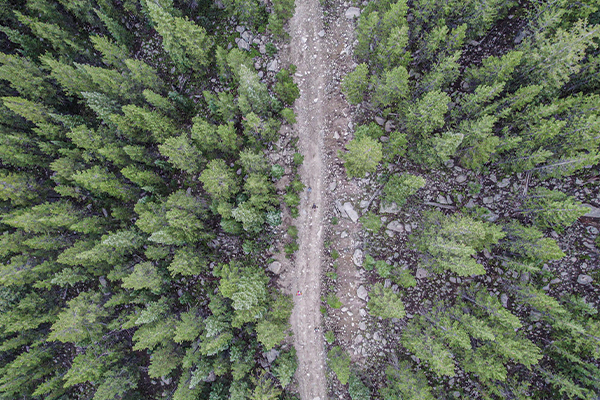
The backside of Hope is bruisingly steep in spots, and I took it easy, still trying to save my quads. Ian did disappear into the forest here, aided by an untimely pit stop on my part, and by the time I hit the contour trail up to Winfield, I could feel myself hitting another minor low patch. No matter. I walked even the slightest uphill grades, using them as excuses to drink and eat, and was heartened when I heard cheers down in Winfield at 7h50–the leaders weren’t that far ahead...geez, maybe this is still doable.
Less than a mile out of Winfield the leaders of Adrian Macdonald and Tyler Andrews came running back towards me and then just a minute or so from the turnaround, Ian was marching towards me vigorously. Wow, had he and I really moved up so far in the field? I spent about five seconds in the aid station, filling a single water bottle (I had noted three different streams I could dip from on the way back up Hope), and grabbed a couple of slices of watermelon. I’d reached halfway in 8:05–nearly 20min slower than ever before. I was proud of myself for sticking to the plan and was curious if I could now reap some benefits in the second half.
Winfield to Twin Lakes (50-62mi)
I was surprised to see Cody Reed still in the Winfield aid, and he followed me out as I started jogging back towards Leadville. Heading up the forest road back to the trail, Cody stubbornly ran a few yards in front of me while I hiked and munched my watermelon. Twice I had to shout at him to keep him on course as he missed the race flagging. Once we were turned onto the trail I passed and knew that his competitive day was done–I was actually concerned for whether he would make it back over the pass in that kind of mental fog. Oh well, plenty of other runners would be coming by soon enough.
Ian must’ve been in a bit of a low patch himself as I soon saw him hiking a flat section up ahead. I still thought of Ian as the most dangerous competition, but my legs were feeling good and I rationalized that as long as I wasn’t pushing too hard it was fine to pass. If you’re feeling good, it’s always easier to lurk behind a competitor–you can see them, they’re not going to surprise you in any way–than it is to pass and be in the position of being chased. Better to be the hunter than the prey. However, you also don’t want to waste good time in a race. If the legs are feeling good, it makes sense to capitalize on that at the moment, but always with a mind to not overextend oneself unnecessarily. I felt great on the trail back to Hope Pass and was further boosted by crossing all the runners on their way to Winfield. Once I hit the steep stuff up the pass I geared way down, really just walking up the mountain as easy as I could. Ian was behind me, I didn’t want to start trying hard until after Twin Lakes, everything was going well.
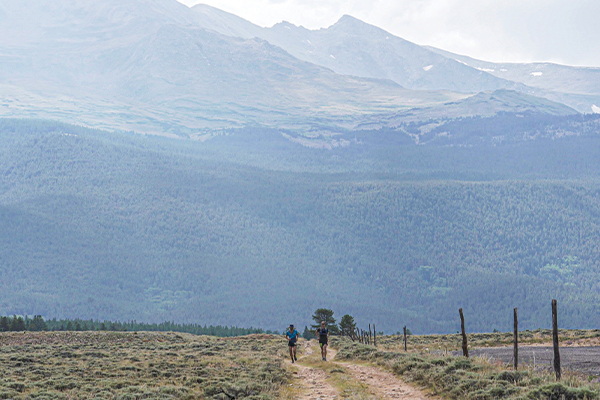
Above treeline, I caught a few glimpses of a shirtless Tyler Andrews marching up the switchbacks and figured that I must’ve cut into the ~15min gap that he held at halfway. It was here that I had a spontaneous feeling of gratitude for my situation. I was back racing the Leadville 100 after nearly a decade away, my legs felt great while running in the top-3, and it seemed like I was moving up even further in the field. I couldn’t believe it was all working out just as I’d hoped. I’d been away from racing for so long that I’d kind of forgotten that I’m actually pretty good at this stuff. There had been so many prolonged periods of doubt over the last seven years, it just felt so improbable that I would be back in the thick of things again at a major 100-mile mountain race. I felt lucky.
Once over the top, it didn’t take long for my running legs to come around and I spent the descent to Twin Lakes making sure that I wasn’t pounding too hard and that I was being as courteous as possible to all the runners still making their way up the pass the first time. I knew I wasn’t descending particularly fast, but that was fine, I again reminded myself not to push until after Twin Lakes. And sure enough, a few minutes from the bottom of the hill, Ian came storming by, once again running the downhills faster than I was yet willing to. However, a few minutes later, we both passed Tyler, and just like that were running 2nd and 3rd overall, in a classic Colorado high country afternoon rainstorm, through the circus that is Twin Lakes at mile 62.
Twin Lakes to Pipeline (62-73mi)
Before the race, I had waffled as to whether I wanted pacers or not. I lined up my buddy Len to help out Hailey with crewing but also to be on deck if I changed my mind about pacing. Len and I have been on a few bikepacking trips together, and from those, I knew him to have a lowkey, reliably pragmatic demeanor when things go sideways–desirable qualities in a pacer. Despite my pre-race thoughts, when I came through Twin Lakes at mile 40 that morning, hot on the heels of Ian, I had told Len to be ready when I returned. At Leadville, having someone to carry everything for you is an incalculable advantage. Leadville’s mulling policy is an oddity in ultrarunning, but everyone’s free to partake, so I have no qualms utilizing it.
Len had a running vest loaded up with any food or clothing I could ever want, all I had to do was hike. We followed Ian and his pacer Patrick up the hill at what I felt to be a pleasantly conservative pace. I was still wary of pushing too hard, but I was also still figuring that Ian was who I was really competing against, never mind the reports of Adrian being 15-20min off the front. Finally, right near the summit of the ~1500’ climb, Ian’s pace seemed to lag awkwardly, so Len and I jogged by and proceeded to run the next section of downhill and flat trail quite hard. When I noticed that Ian hadn’t followed, I calculated that this was finally the moment to open a gap and make it stick; I allowed the adrenaline of this realization to push me into some extended low-7min mile pace.
A couple of miles later I stopped to change my river-soaked socks and let my macerated feet dry out for a second; I was heartened when Ian didn’t catch up during that 2min pause. The rest of the way to Pipeline I kept on the gas as best I could. This section had been my undoing in nearly every other Leadville 100 I had ever run. I’d never been passed on this section because I always came off Hope Pass with a sizable lead, but my lagging pace here typically preceded either a pass or a big blow-up shortly thereafter. Additionally, this was often where my stomach rebelled and continuing to consume calories became an issue. This year, however, after emphasizing real food for the first 60 miles, my stomach was still reacting positively to the easy-to-eat gels I’d been consuming since passing Ian. It felt gratifying to (for once) be running well after mile 70 instead of just surviving.
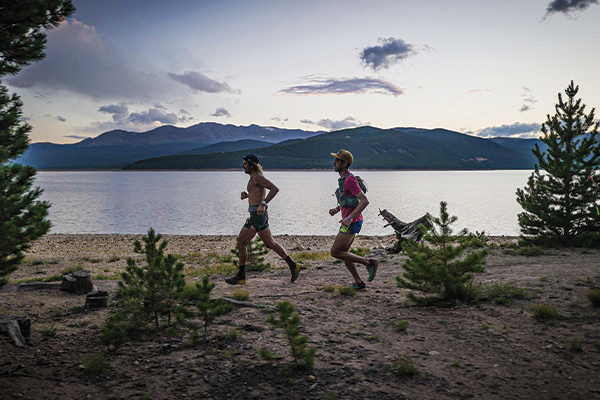
Pipeline to Mayqueen (73-88mi)
I always dread the paved road in this section; there have been years (2009) where I’ve walked every step. There has never been a year where I’ve run it well. This year, despite it being the first time I’d ever embarked on it, not in the lead, I was finally happy with it. We had a tailwind out of the south, and cutting off the road onto the lumpy pasture portion leading to the Outward Bound aid station helped revive my legs. At the bottom of the Powerlines we ran by my buddies Jeff and Homie and I was relieved to be back on some steep hiking grades.
Marching up to the 11,100’ Sugarloaf Pass I tried to stay steady–we’d been able to confirm a 6min time gap on our nearest pursuer, who we assumed was still Ian (it was actually a resurgent Matt)–but not go too hard and blow up prematurely. Upon reaching the summit, the 82 miles had begun taking their toll, but I eventually got rolling and was able to run hard all the way down into Mayqueen at mile 88.
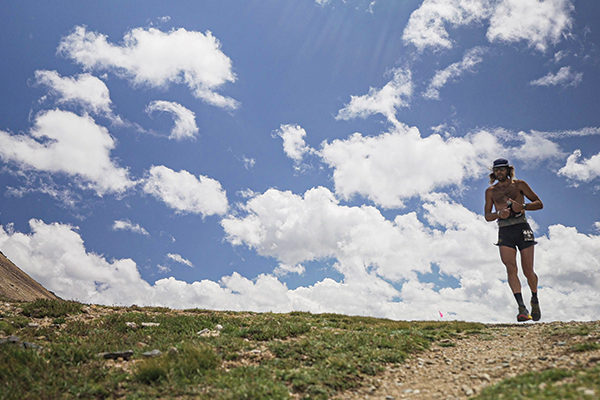
Mayqueen to the Finish (88-100mi)
From Mayqueen, you can put all of your focus into the finish line. It is finally an attainable goal. Leaving Mayqueen at 14:54, the reports were such that I really had no chance of catching Adrian, but I was quite optimistic for maintaining 2nd place in a substantially sub-17hr finish. Two hours for 13 mostly flat miles is totally reasonable.
Well, racing 100 miles is not reasonable. The next six miles over to the Tabor Boat Ramp (mile 94) were an interminable rollercoaster of hiking and meager jogging. For pacers, I’d switched from Len to an old college cross-country buddy, Dan Kraft. Dan had raced to 4th place in the Pikes Peak Ascent that morning and then driven up just to help me out at Leadville in the evening. I felt bad that after my strong running with Len I seemingly couldn’t muster a performance worthy of Dan’s considerable effort to be there.
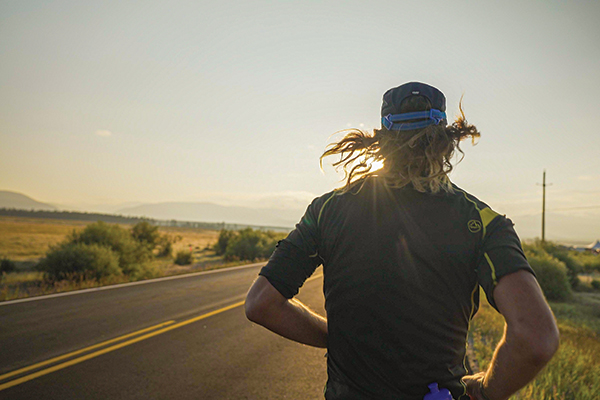
Just as Dan was commenting on the beautiful sunset alpenglow on the Mosquito Range (it was) and I was starting to feel some minor relief at finally getting to the Boat Ramp, where the trail would smooth out for good, Matt Flaherty and his pacer came flying by. Ooofffff. After running in 2nd place for the last 30 miles, this felt like a rude puncturing of a gradually inflating balloon of momentum that I’d been counting on to carry me to the finish. For a few seconds I tried to lift my stride in an effort to minimize the gap that Matt would be able to create, but it was futile. My legs were concrete blocks. I’m going to blame my utter lack of runs longer than 40 miles in the past seven years. Or maybe I was just out of practice at running hard late in a gruelingly long race. That too.
Either way, the remaining hour of running to get to Leadville was a definite low-light of the day, but when I finally crested the last hill by the hospital on 6th Street, running up to the finish line was just as sweet as I remember from my previous three successful attempts at the event. What’s the takeaway? I’m not sure.
One thing is for sure–I’m not the same person that first ran that 17hr-flat time winning the Leadville 100 15 years ago. Although my result this year seemed eerily similar on paper, my relationship to running and racing has changed immensely over the last decade and a half. I love running, but I am just as fulfilled by other outdoor activities–climbing, cycling, skiing–and as a result I feel like a more balanced individual.
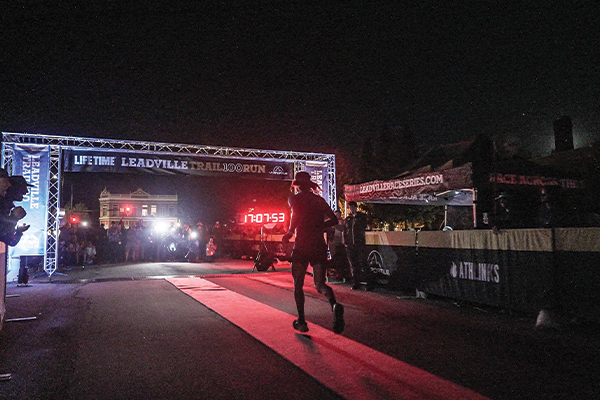
When I was focused on purely running, I carried a bit of a chip on my shoulder, entering races to prove myself and beat others. When I started winning ultras, it was the first time that all of the time and energy I was putting into running was validated. A lot of my motivation for racing was external. At Leadville this year, the motivation felt much more internal, hence, I think, the calm nerves and unconcerned attitude in the days leading up to the race. I was interested in testing myself against the distance and the course and seeing how my mind and body would respond to the challenge. I wasn’t there to explicitly beat anybody. Instead, I viewed my competitors as simply co-conspirators with the same goal–run 100 miles through the mountains as quickly and efficiently as we could. Their presence was necessary for helping me find my limits, not to serve as adversaries.
Having said that, it always feels good to be able to cultivate and pursue a talent; I’m objectively not talented or skilled at climbing, skiing, or biking.
Now, time for some rest! It’s been a busy summer.


